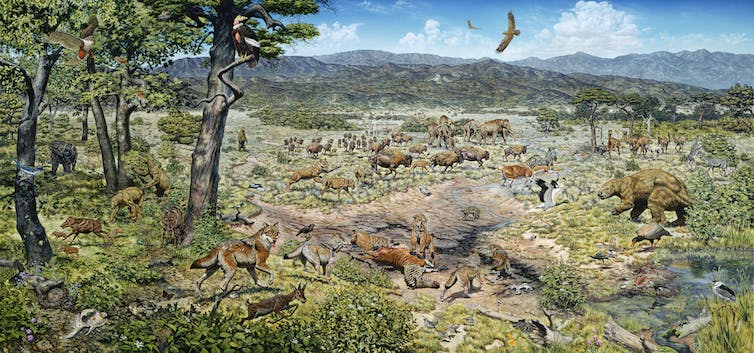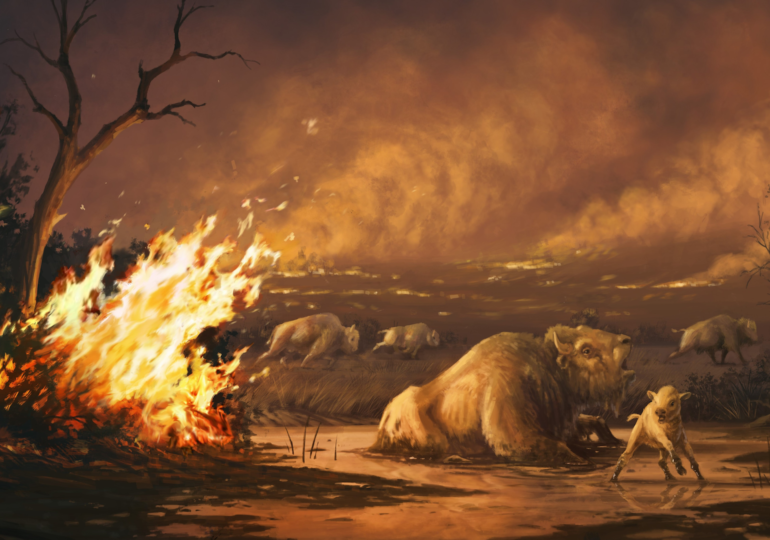Over the past decade, deadly wildfires have become increasingly common because of both human-caused climate change and disruptive land management practices. Southern California, where the three of us live and work, has been hit especially hard.
Southern California also experienced a wave of wildfires 13,000 years ago. These fires permanently transformed the region’s vegetation and contributed to Earth’s largest extinction in more than 60 million years.
As paleontologists, we have a unique perspective on the long-term causes and consequences of environmental changes, both those linked to natural climate fluctuations and those wrought by humans.
In a new study, published in August 2023, we sought to understand changes that were happening in California during the last major extinction event at the end of the Pleistocene, a time period known as the Ice Age. This event wiped out most of Earth’s large mammals between about 10,000 and 50,000 years ago. This was a time marked by dramatic climate upheavals and rapidly spreading human populations.
The last major extinction
Scientists often call the past 66 million years of Earth’s history the Age of Mammals. During this time, our furry relatives took advantage of the extinction of the dinosaurs to become the dominant animals on the planet.
During the Pleistocene, Eurasia and the Americas teemed with enormous beasts like woolly mammoths, giant bears and dire wolves. Two species of camels, three species of ground sloths and five species of large cats roamed what is now Los Angeles.

This mural, called ‘Trapped in Time,’ shows some of the megafauna that roamed Los Angeles during the Pleistocene epoch. Most of these species died out during a global extinction event at the end of the epoch.
Mark Hallett
Then, abruptly, they were gone. All over the world, the large mammals that had characterized global ecosystems for tens of millions of years disappeared. North America lost more than 70% of mammals weighing more than 97 pounds (44 kilograms). South America lost more than 80%, Australia nearly 90%. Only Africa, Antarctica and a few remote islands retain what could be considered “natural” animal communities today.
The reason for these extinctions remains obscure. For decades, paleontologists and archaeologists have debated potential causes. What has befuddled scientists is not that there are no obvious culprits but that there are too many.
As the last ice age ended, a warming climate led to altered weather patterns and the reorganization of plant communities. At the same time, human populations were rapidly increasing and spreading around the globe.
Either or both of these processes could be implicated in the extinction event. But the fossil record of any region is usually too sparse to know exactly when large mammal species disappeared from different regions. This makes it difficult to determine whether habitat loss, resource scarcity,…



